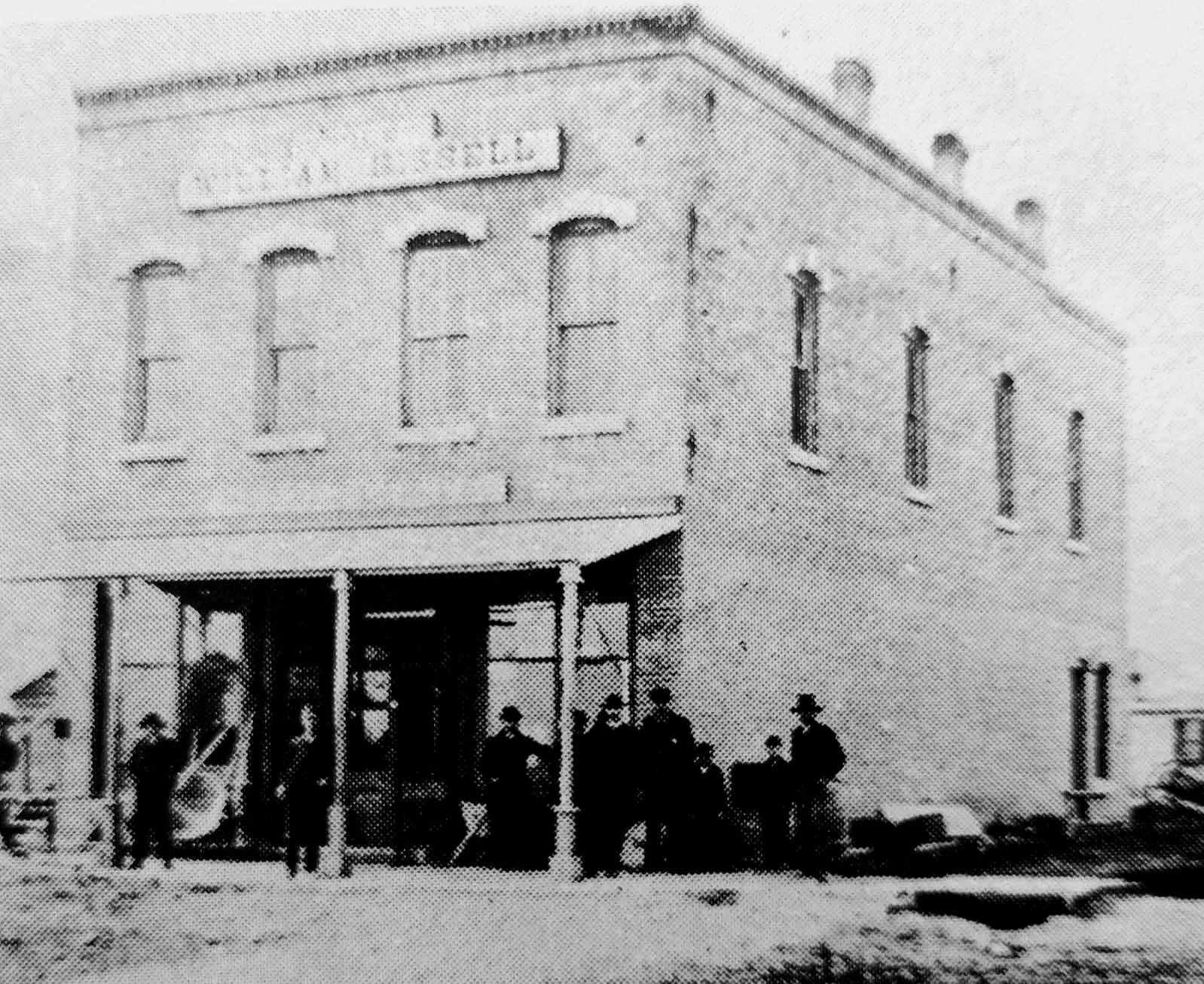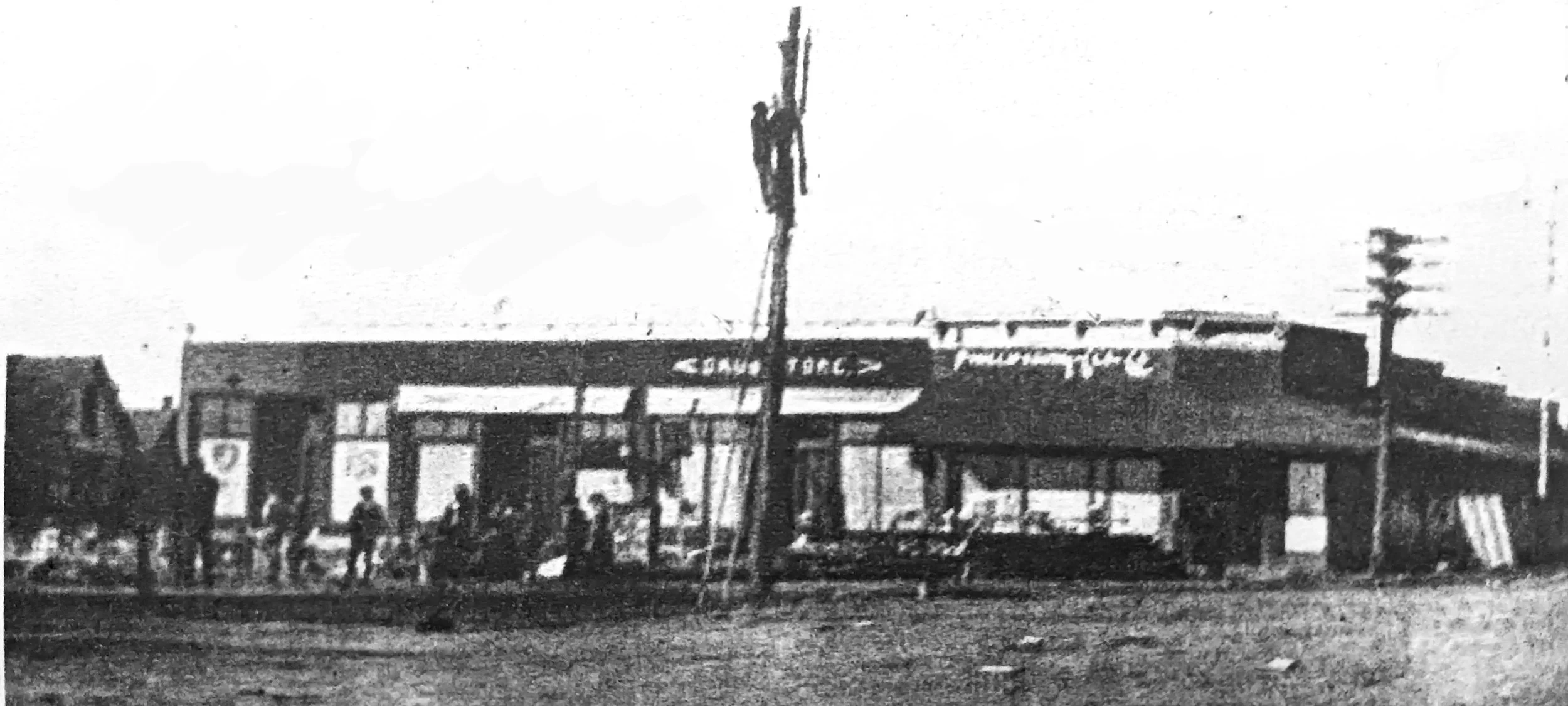The Bissell Block.
By Brennan Engle
One of the very first brick business houses ever erected in Phillipsburg was referred to in the very early days of Phillipsburg as “Bissell Block”.
One of the first two brick buildings in town was known as the “Bissell Block” and helped support commercial development.
The lone building was constructed in 1880 by William Bissell, a town founder and real estate investor. The building was situated on Third Street, where Phillipsburg Liquor and Wine Cellar is now situated. According to written history, this location had previously been the site of the very first building in Phillipsburg, made of logs to establish Phillipsburg as a town in 1872. This log structure subsequently burned down at some point thereafter.
In 1874, William Bissell had platted a received a patent for a large portion of the city, referred to as Bissell’s Addition. In 1887, he platted another addition to the town further south, known as Bissell’s Second Addition.
Hard at work in the real estate and lending business, his office was located in the upper story of his large downtown Phillipsburg brick business.
During these early days, Bissell was elected to serve two terms as Register of Deeds. Settling into his political position, he set up shop in Phillips County’s first dedicated courthouse, which was a wood-frame courthouse on the northwest corner of the square where Sawyer’s Act Hardware now sits.
With the courthouse on the northwest side of the square, Bissell’s personal business house sat on the southwest side. Being a realtor, lender, and register of deeds, this early-day Phillips County mover and shaker was also editor of the Phillipsburg Herald newspaper, with the Herald offices also being based in the Bissell Block.
The lower storefront portion of this structure was occupied as a general store, operated by A.D. Huling, who located there in 1880. Huling transitioned from carrying general merchandise to hardware in 1885. The building was doubled in size in 1888 when a south half was added and the front facade remodeled from a standard brick storefront to a more imposing one consisting of brick, stone, and iron.
Taken in the 1890s, showing the building’s new addition and change to its facade.
An Arsonist attempted to burn down the Bissell Building in December 1888. At the time, the businesses occupying its interior consisted of E.B. Sewell Dry Goods, French and Johnson Hardware, merchant tailor G.A. Blue, loan agent C. Twitchell, William Bissell’s office, and the Philipsburg Herald newspaper office.
Space of two civic organizations - the Oddfellows, and the G.A.R. (Grand Army of the Republic, a Union Civil War veterans’ organization very similar to the present-day American Legion) were also here.
There were also nine tenants living in quarters on the second story. Members of the Sewell family, who lived above their store, were awakened to the sound of an explosion in the basement at 4:00 a.m. on December 19th, 1888.
Upon entering the basement, filled with smoke, the tenants discovered an arsonist had assembled small piles of kindling in three different places - at each end and in the middle.
The kindling, comprised of sticks, wood, and wood shavings, had been doused with almost a full barrel of kerosene and lit on fire. Fortunately, the fire was discovered and extinguished before any major damage was done.
the tailor who occupied space in the building, George Blue, was arrested and jailed for starting the fire, with charges against him being dropped a little over two years later in February 1891 due to insufficient evidence.
At the time of this attempted destruction of the Bissell Block Building, there had recently been arsonists at work in Logan, Kerwin, Stockton, and Norton. The huge blazes which destroyed large parts of the Kerwin and Logan business districts just weeks before the Bissell Block fire were directly tied to Republican Party/Union Labor Party political violence which consumed Phillips County during the November 1888 presidential election.
Two years later, however, this building did succumb to a fire. in 1900, William Bissell had died in 1897, after which the Bissell Building was sold in 1898 to C.F. Shimeall. Shimeall was a clothing merchant living in Norton who earlier had a store in Phillipsburg for a year in another location.
With his purchase of the grand Bissell Building, Shimeall moved into its north half.
At this time, the south half of the building was occupied by the “City Bakery”.
On July 17, 1900, the building met its demise in a second and more devastating fire. In addition, two wood frame buildings to the south of it, which were occupied by A. Handy & Co. and the New York Racket Store, were also destroyed.
In late 1899 or early 1900, Mr. Handy had added his frame building to the south of the double brick Bissell Building. And in it there was an interior archway connecting the wood frame and brick buildings.
On the evening of July 17, 1900, Handy was finishing his bookwork shortly after his clerks had closed up the front of his two stores and left. Turning down the wick on his kerosene Rochester Lamp, he went to put his books in the safe. While passing through the archway of the wood frame building from the dry goods department to the grocery department, he heard an explosion behind him, quickly seeing his clothing area being engulfed in flames.
Handy tried to put out the flames, but realizing it was impossible, he took his books and headed to the front of the grocery department. He was so frightened by the situation that, without unlocking the door, he jumped through the glass to the outside, with his pant legs on fire. Wrapping his coat around his legs to extinguish it, he afterward commented that he did not think his Rochester lamp caused the fire.
Instead, the merchant attributed the inferno to an acetylene plant, which was also located in the building that supplied “light for the entire block,” according to a Phillipsburg Dispatch newspaper report.
The fire was extinguished by a bucket brigade of community members. It was reported that the standpipe water tower was dry and not of any use during this fire.
Two nearby homes that had been in imminent danger had their contents removed, but the fire was brought under control, and there was no damage to those structures.
the store manager of the Shimeall Clothing store on the corner of C.M. Poe. He had lived above the Shimeall Clothing Store in the Bissell Block Building, but was not home when it burned down.
That portion of the structure had not been covered by insurance by Shimeall, but he did carry $3,500 ($125,350 in 2023 dollars) worth of coverage on his merchandise.
Fortunately for Handy, his part of the structure was insured for $15,000 ($537,214 in 2023 dollars).
In a newspaper overview of their business shortly after the fire, it was reported that Shimeall began constructing a new building on the corner right away.
With damaged goods discarded, they had “put in a larger stock than ever” and “are going right on as if nothing had happened.”
It was reported at the time that the business in the northeast section would have a corner entrance “like a bank” and feature plate glass windows.
After the fire of 1900.
The one-story building gave the commercial corner a new look.
This building was later home to the Charvat Bookstore for many years, according to some handed-down history. John Charvat was a merchant who moved to Phillipsburg in 1910. A review of ownership of this lot at the Register of Deeds Office shows Charvat did purchase this building in the 1920s.
The overall architecture of this corner business, which as of 2023 is now Phillipsburg Liquor and Wine Cellar, remains recognizable to this day, 123 years after it was erected. Other businesses also in the historic structure now include Thompson Chiropractic, Heritage Insurance, and the Phillips County Review.


